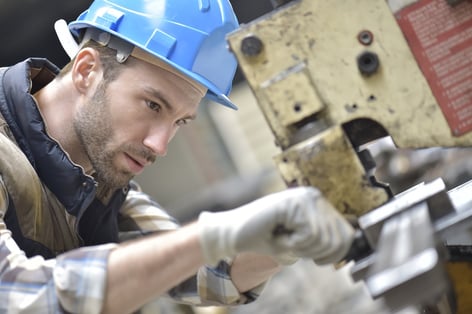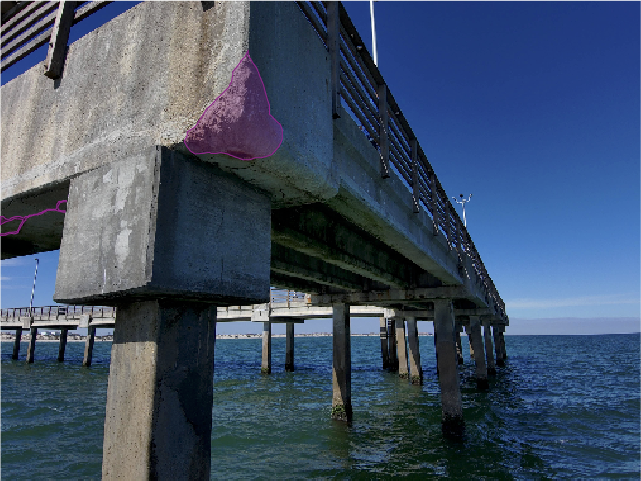
Drilling, production, processing, storage and transportation of petroleum products impose severe demands on metallic materials used in the oil and gas industry. Some of these demands include structural and/or thermal stresses, fatigue, crack growth and corrosion that requires constant inspection and maintanance, as explained below.
- Structural stresses develop due to flexure and bearing loads imposed on pipelines. Temperatures as high as can make steel brittle.
- During drilling operations, acidic bearing fluids can eat into the tubular structure through which they flow. Furthermore, crude oil contains sulfur and hydrogen sulfide that induce corrosion in pipelines.
Basic properties of carbon steel
One material that is able to satisfy many of these demands is carbon steel. It is an alloy of iron and up to 2 percent carbon that increases the strength of the material and provides corrosion resistance. Other additives such as nickel, chromium, cobalt, manganese, or tungsten enhance the performance of the material in the oil and gas industry.
There are four main types of carbon steel, distinguished by the amount of carbon content.
- Mild/low-grade carbon steel contains less than 0.3% carbon by weight.
- Medium grade carbon steel contains 0.3% to 0.59% carbon by weight.
- High-grade carbon steel contains 0.6% to 0.99% carbon by weight.
- Ultra-high grade carbon steel contains 1.0% to 2.0% carbon by weight
Corrosion resistance in carbon steels
Corrosion of carbon steel is due primarily to oxidation. Ordinary carbon steel reacts to the presence of oxygen by forming a volatile iron oxide layer which speeds up oxidation. It's important to have a preventive maintance program to spot these changes early and fast. Using drones to perform these tasks is a fast and cost effective method.
Stainless steel does not corrode because it uses between 10.5% to 11.0% chromium as a special hardening agent. Stainless steel reacts to the presence of oxygen by forming a chromium oxide layer which inhibits oxidation.
Although stainless steel does not corrode, it is not used widely for all oil and gas applications, because it is more expensive than carbon steel. Careful budgetary planning is required when selecting between the two types of steel.
It is necessary to mention that composites are becoming popular materials used in the oil and gas industry. Composites can be designed to provide required structural and thermal properties. Furthermore, composites provide low density, corrosion resistance, good fatigue endurance, and are cost effective. However, discussion of composites is not the focus of this article.
Tailoring of carbon steels for the oil and gas industry
The structural strength of carbon steel pipelines depends on the method of fabrication. Fabrication methods involve extrusion, rolling, milling, hardening, and welding.
Mechanical properties of steel (whether stainless or carbon steel) depend on its type and grade.
Stainless steels are more ductile than carbon steels because they contain higher amounts of nickel.
The structural strength of carbon steels is determined by the carbon content. Usually, more than 0.3% by weight of carbon is required to provide adequate structural and thermal strength.
Except for susceptibility to corrosion that needs constant inspections, carbon steels are good and cost effective materials for the oil and gas industry. Types of corrosion that are of concern include MIC (microbially induced corrosion), oxygen-related corrosion, galvanic corrosion and under-deposit corrosion.
Hydro testing is normally used to determine the fitness of pressurized pipelines for service with regard to corrosion
Different types of VCI (vapor-phase corrosion inhibitors) are utilized to protect carbon steels from corrosion. Vendors provide five main types of corrosion inhibitors (VCI A, B, C, D, and E).
VCI A uses salts of amines, organic acids, and triazole to form a protective film that inhibits vapor corrosion.
VCI B uses ammonium salts of aromatic acids in powder form for corrosion inhibition. It is biodegradable within a month of use.
VCI C uses a blend of organic and non-organic salts of carboxylic acids, triazole, and alkalinity builders. It provides effective corrosion inhibition even in the presence of high concentrations of chloride and sulfate ions.
VCI D uses a combination of biodegradable surface modifiers, chelating agents, and oxygen scavenger to fight corrosion.
VCI E is a vegetable-based corrosion inhibitor with high surface energy. Therefore it binds easily to metal surfaces to fight corrosion.
Carbon steels are suitable materials for use in the oil and gas industry because
- They provide adequate structural and thermal strength;
- They are cost effective;
- Their surfaces can be protected from corrosion by utilizing well-known corrosion inhibitors.
Drone uses in the oil and gas industry
There are numerous NDT / NDE inspection possibilities that can be explored for Oil & Gas assets through UAVs. Without limitation to the applications described below, UAVs can be used for infrared thermal imagery for detecting material flaws as described below:
- 3-D characterization of the asset with the defects of installations through infrared thermography.
- Using infrared thermography for detection of delamination.
- Using infrared thermography for detection of moisture in pipelines.
- Detection using active thermography.
Tags
Oil and Gas


.png)
